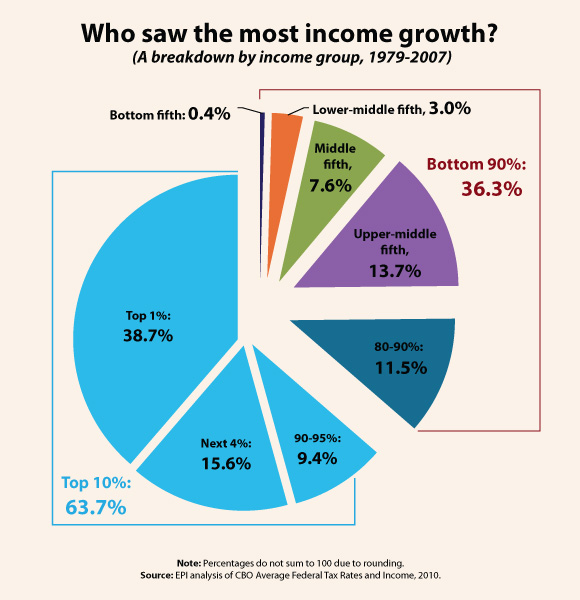Income growth over the last few decades has been enormously unbalanced, and this must be taken into account as the nation considers shifts in tax policy and develops a fiscal plan that strengthens the recovery and targets a sustainable deficit. According to the Congressional Budget Office, between 1979 and the start of the current recession in 2007, the pre-tax incomes of the upper 1% grew 214%, while the incomes of the middle-fifth and lowest-fifth grew, respectively, 25% and 4%. As the Chart shows, this extremely unbalanced growth implies that 38.7% of all of the income growth accrued to the upper 1% over the 1979-2007 period: a greater share than the 36.3% share received by the entire bottom 90% of the population.

Those in the top 10% of the income scale received 63.7% of all the income growth generated over the 1979-2007 period. In contrast, the bottom 20% of all earners saw such a small share of income growth – just 0.4% – that it barely shows up on the included pie chart.
Note: “Upper-middle fifth” (60-80%) refers to those in the income scale who make more than 60% of earners but less than the top fifth. “Lower-middle fifth” refers to those who fall in the lower 20-40% range of the income scale.
Methodology: The Congressional Budget Office (CBO) does not include people with negative incomes when they compute income fifths. Calculations of shares of income growth with their data do not, therefore, total 100%. In analyzing the CBO data, EPI proportionally adjusted each income share so that they collectively totaled 100 and used the growth of average incomes from the CBO data to develop income growth for every income group. These adjustments actually lead to an understatement of this growing income inequality since a greater share of the population had negative incomes in 2007 than in 1979.
